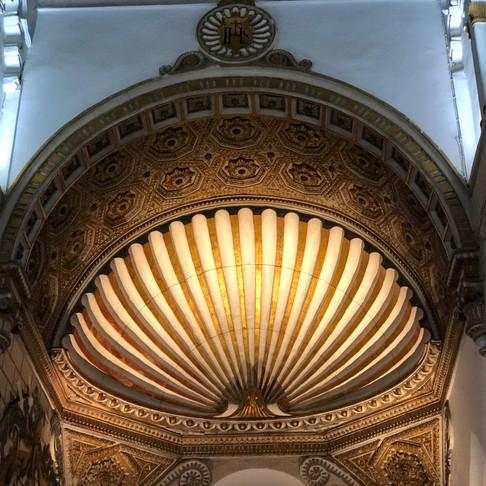Santa María la Blanca
I first heard of the Synagogue of Santa María la Blanca in a course given by Prof. Shalom Sabar in the Hebrew University of Jerusalem. The course, Jewish Art & Culture in Medieval Spain & Portugal, surveyed the Jewish art that developed in the Iberian Peninsula from Late Antiquity to the Expulsion and included works created under Christian rule and remains from the Islamic period. In the lecture that dealt with synagogue architecture, Prof. Sabar mentioned, inter alia, the old synagogue of Toledo, Santa María la Blanca, describing its beauty. Ever since, I longed to see this synagogue, and finally, I have.
Entering a large courtyard from a busy street, the plain brick exterior does not convey the impressive interior. This five-aisled synagogue, which is connected with Joseph Ibn Shoshan (1135-1205), son of the finance minister to King Alfonso VIII of Castile, is considered the oldest synagogue standing building in Europe.
The synagogue, which was constructed under the Christian Kingdom of Castile by Islamic architects for Jewish religious use and symbolizes the coexistence of the three cultures, features a series of arcades supported on a network of piers and spectacular Mudéjar plaster-work (Mudéjar refers to a style of ornamentation and decoration in post-Islamic Christian Iberia that was strongly influenced by Moorish taste and workmanship).
At the beginning of the 15th century, after a massacre held upon the Jews of Toledo, the synagogue was expropriated from them and turned into the Church of Santa María la Blanca. In the 19th century, the synagogue was declared a Spanish national monument.







































